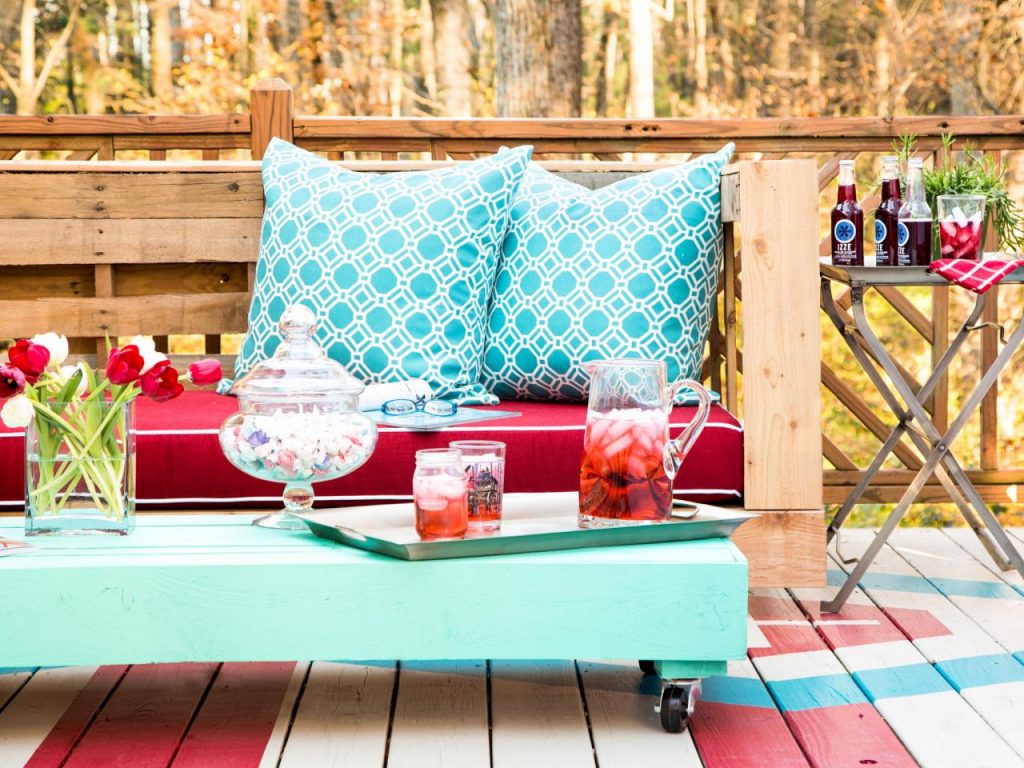Kletter- und Hängepflanzen - Die 4 Beliebtesten Rebenpflanzen
Ist es für Sie undenkbar, in einer Wohnung ohne schöne Pflanzen zu leben? Kein Wunder - Pflanzen können eine gemütliche Atmosphäre schaffen, die beim Entspannen hilft. Sie werden vor allem von Bewohnern großer Städte sehr geschätzt, die normalerweise nicht viele Möglichkeiten haben, mit der Natur in Kontakt zu kommen. Fragen Sie sich, welche Arten zu Hause am besten zu züchten sind? Hängepflanzen und Kletterpflanzen sind sehr beliebt. Es gibt so viele von ihnen, dass Sie kein Problem haben werden, die zu Ihren Gunsten auszusuchen. Entdecken Sie die beliebtesten Zimmerkletterpflanzen. Erfahren Sie, welche Ansprüche sie haben und wie man sie pflegt.

Was genau sind Kletterpflanzen?
Kletterpflanzen (auch bekannt als Rankpflanzen, Schlepppflanzen oder Hängepflanzen) können sowohl im Innen- als auch im Außenbereich angebaut werden. Sie sind charakteristisch für ihre langen und dicken Zweige. Einige von ihnen haben spiralförmige Zweige, die mit Zierblättern bedeckt sind. Einige Arten von Schlingpflanzen haben auch Blüten oder Früchte.
Kletterpflanzen für den Innenbereich benötigen, genau wie die im Garten, eine spezielle Stütze, um die sich die Stämme leicht wickeln können, ohne dass die Gefahr einer Beschädigung besteht.
Es wird empfohlen, Kletterpflanzenstützen aus Metall oder Bambus zu verwenden. Holzstäbe sind nicht zu empfehlen, da sie Bakterien und Pilze verbreiten können, die eine Gefahr für die Pflanzen darstellen.
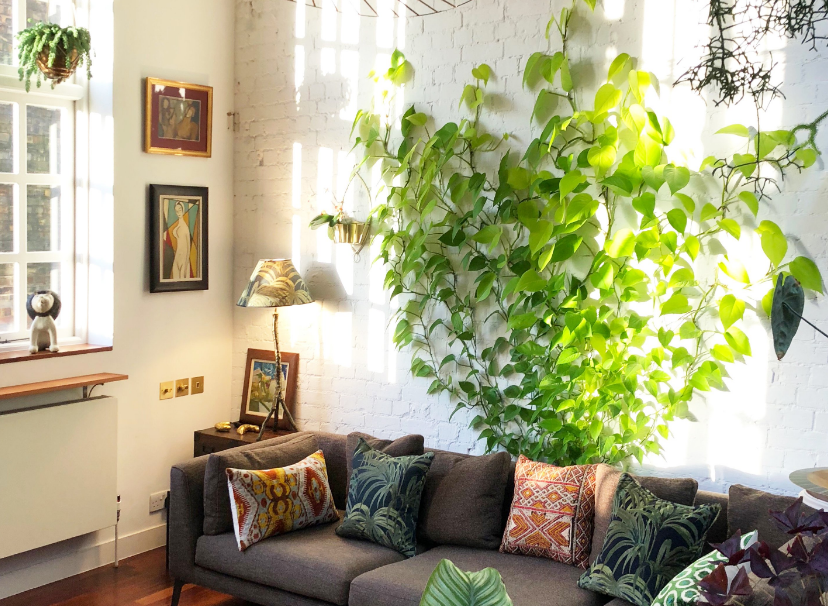
Warum ist es eine gute Idee, hängende Pflanzen zu Hause zu haben?
Hängepflanzen sehen vor allem wirklich gut aus und sie bereichern das Innendesign. Sie sind eine ziemlich beliebte Wahl für Innenräume im Boho-Stil, sowie für solche, die als Urban Jungle gestaltet sind. Das bedeutet aber nicht, dass dies die einzigen geeigneten Designs für Zimmerpflanzen sind. Kletterpflanzen sind sowohl für ein großes Haus als auch für eine kleine Wohnung perfekt. Außerdem sind sie oft die Hauptelemente von sogenannten vertikalen Gärten, die an Wänden installiert werden.
Eine weitere bemerkenswerte Tatsache ist, dass Kletterpflanzen oft gesundheitsfördernd sind. So können sie das Wohlbefinden verbessern, z.B. durch Luftreinigung. In diesem Fall hängt jedoch alles von der Art der Kletterpflanzen ab, die Sie auswählen - jede Art ist anders.

Monsteras - stilvolle Kletterpflanzen für den Innenbereich
Monstera ist eine sehr beliebte Zimmerpflanze geworden. Berühmt wurde sie durch ihre charakteristischen Blätter, die jeder - auch Nicht-Pflanzenliebhaber - erkennen kann. Nur wenige wissen jedoch, dass Monsteras Zimmerpflanzen zu den Kletterpflanzen gehören.
Natürlich neigt nicht jede Monstera-Art dazu, auf die gleiche Weise zu klettern. Was die typischen Kletterpflanzen betrifft, so ist die Art Adansonii, auch bekannt als Affenmaske, auf jeden Fall eine Anschaffung wert. Ihre charakteristischen Blätter sind von Löchern durchzogen, was beeindruckend aussieht.
Wie pflegt man diese Art von Schlingpflanzen? Monstera adansonii ist perfekt für diejenigen, die wenig Erfahrung in der Pflanzenzucht haben. Sie hat nicht allzu viele Anforderungen und die Pflege ist fast trivial. Wählen Sie einfach einen halbschattigen Platz für sie, z.B. neben dem Sofa im Wohnzimmer, und gießen Sie sie regelmäßig, aber nicht üppig, einmal pro Woche. Im Sommer können Sie die Pflanze mit Wasser besprühen, besonders wenn die Temperatur im Innenraum über 25°C liegt.
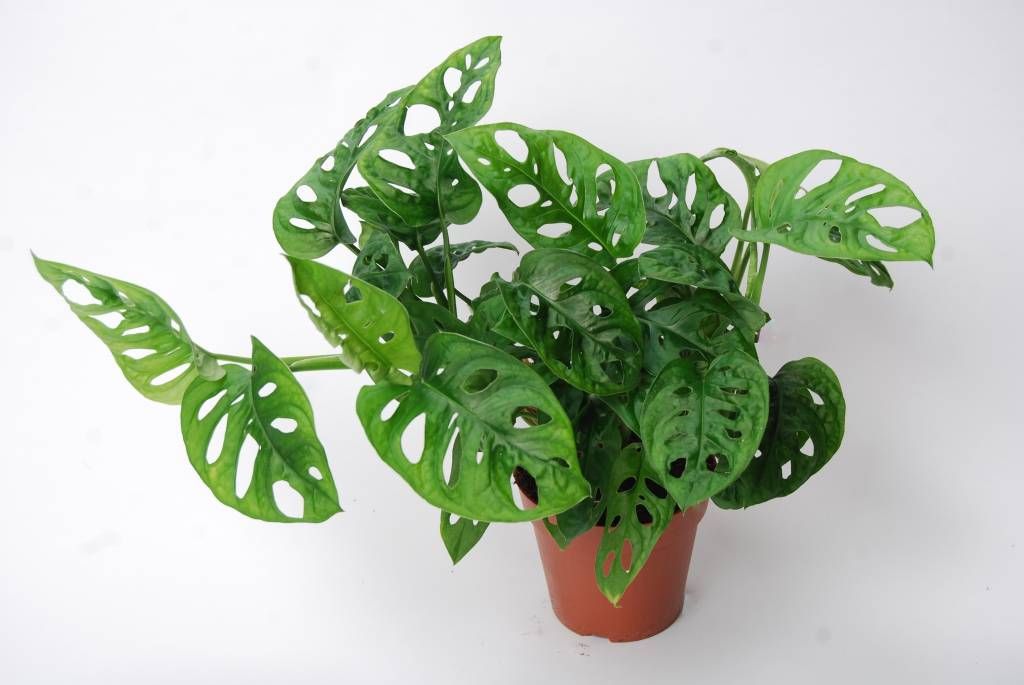

Gewöhnlicher Efeu - eine bekannte Schlingpflanze
Einige Kletterpflanzen sind seit vielen Jahren gleichermaßen beliebt. Der Gemeine Efeu ist eine von ihnen, und er ist in vielen Häusern zu finden. Was sind seine charakteristischen Merkmale? Das Wichtigste: diese Zimmerkletterpflanzen:
- sind nicht zu anspruchsvoll in Bezug auf den Boden,
- brauchen keine besondere Behandlung,
- wachsen schnell,
- passen in viele Arten von Innenräumen,
- sind nicht zu teuer.
Gewöhnliche Efeus sind nicht nur perfekte Weinpflanzen für den Innenbereich. Sie können auch auf Balkonen oder in Gärten an Zäunen und Spalieren angebaut werden. Gewöhnlicher Efeu ist sehr langlebig, so dass niedrige Temperaturen ihm nichts anhaben können.
Die einzige Bedrohung für den Efeu ist zu hohe Luftfeuchtigkeit. Schon eine leichte Überwässerung kann zu Wurzelfäule führen. Gießen Sie die Pflanze deshalb nicht zu oft.
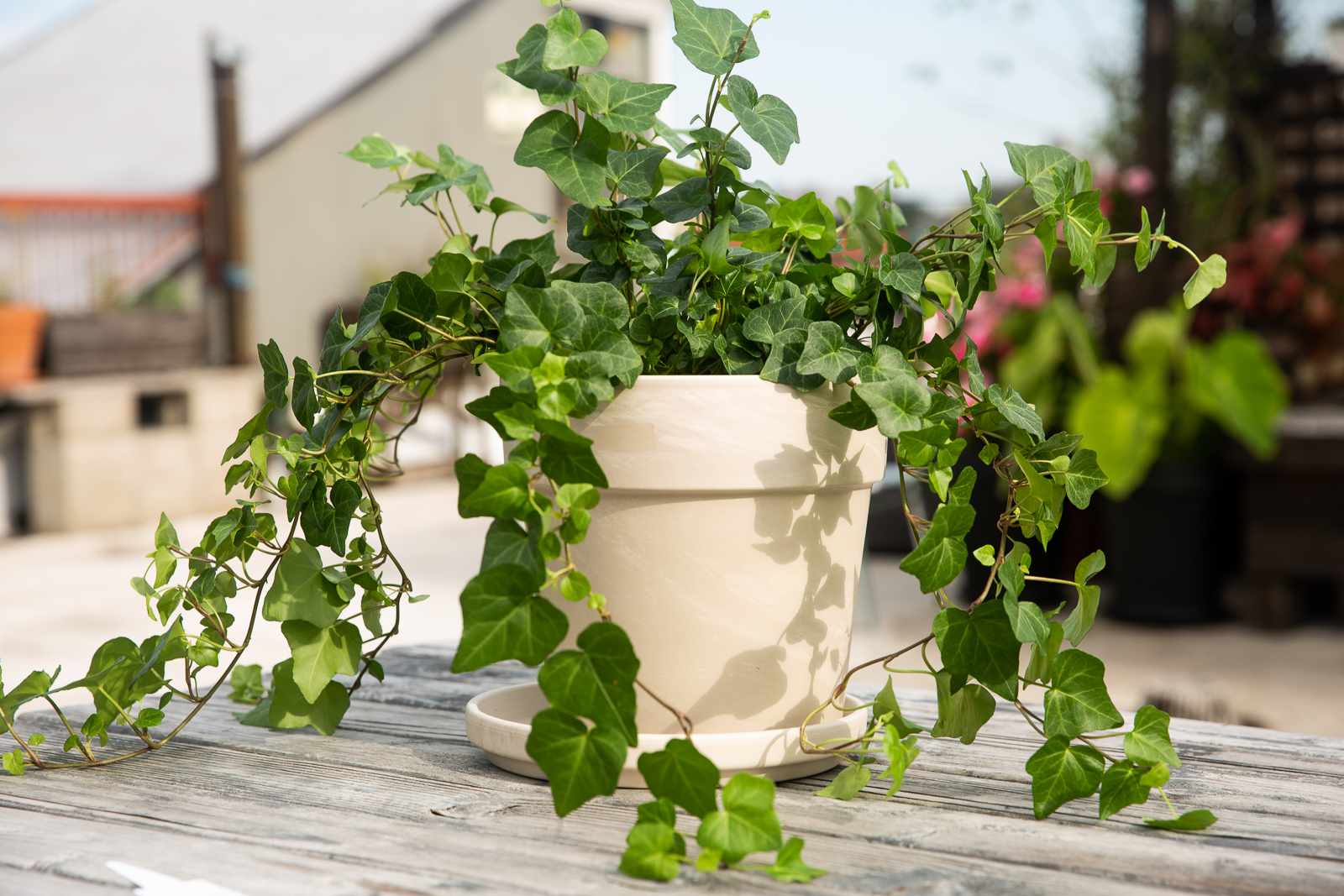

Scindapsus - universelle Zimmerkletterpflanzen
Unter den beliebten Kletterpflanzen ist Scindapsus eine weit verbreitete und oft angebaute Art.
Genau wie der gewöhnliche Efeu ist diese Art von Rankpflanzen dauerhaft und braucht keine besondere Pflege. Sie sind perfekte Zimmerkletterpflanzen für diejenigen, die ein grünes Interieur genießen wollen, aber keine Zeit haben, sich um Pflanzen zu kümmern. Scindapsus ist auch charakteristisch für sein Aussehen. Die Blätter sehen wirklich beeindruckend aus.
Aufgrund der Blattform wird Scindapsus häufig mit dem gewöhnlichen Efeu verwechselt. Sie können den Unterschied an der Größe der Blätter erkennen - sie sind im Vergleich zum Efeu größer.
Scindapsus ist eine blühende Pflanze, die gut beleuchtete Stellen bevorzugt. Sie können ihn auf eine Fensterbank oder auf den Boden bei Balkonfenstern stellen. Die Pflanze sieht aber auch im Schatten gut aus, was ein großer Vorteil ist. Wie bereits erwähnt, ist sie eine nicht allzu anspruchsvolle Pflanze. Die Blätter werden in diesem Fall eine etwas weniger gesättigte Farbe haben, was aber kein Problem ist.
Scindapsus sind Kletterpflanzen, die Sonnenlicht mögen, sich aber nicht wohl fühlen, wenn die Temperatur zu hoch ist. Achten Sie darauf, dass die Temperatur im Raum unter 24°C, aber über 20°C liegt.
Scindapsus mag moderate Luftfeuchtigkeit - sowohl in der Luft als auch im Topf. Denken Sie an regelmäßiges Gießen und besprühen Sie die Blätter im Sommer. Dadurch wachsen die Schlingpflanzen schneller.
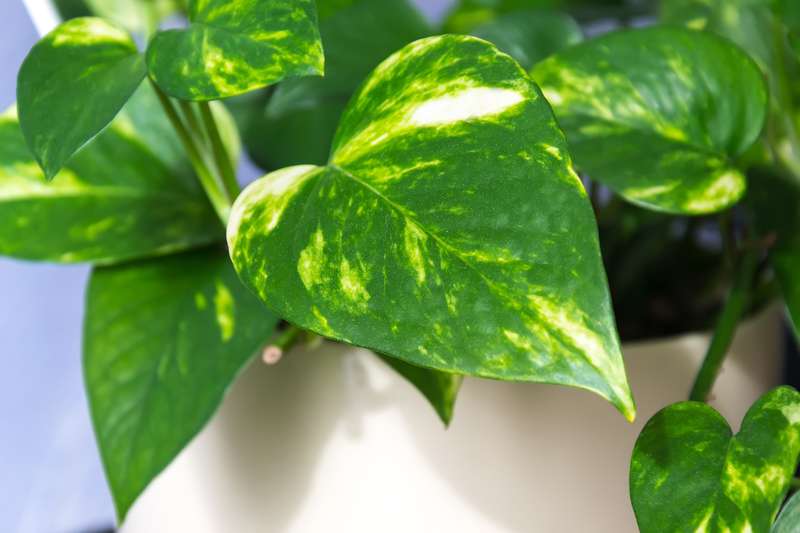
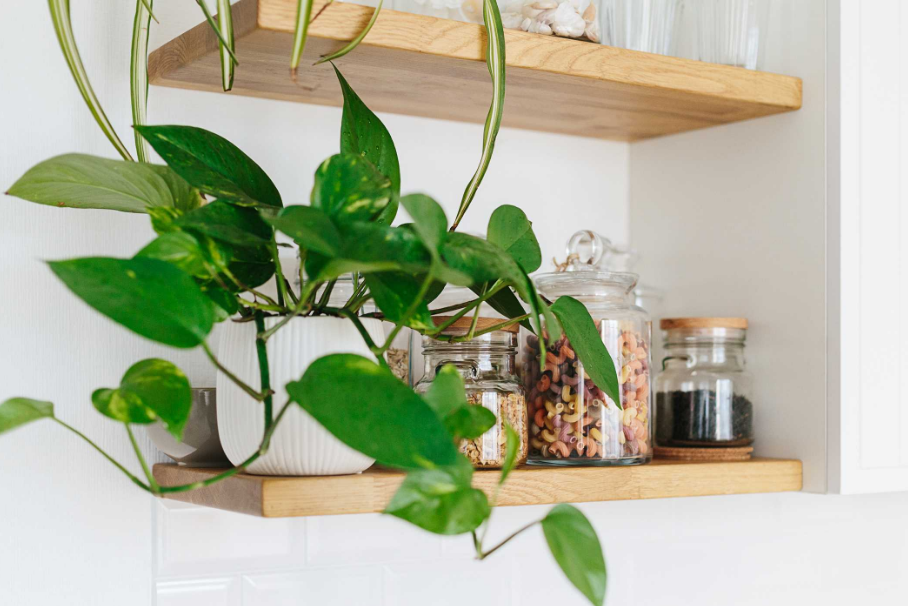
Perlenkette - ungewöhnliche Schlingpflanzen
Gemeinhin als Perlenkette bekannt, ist Senecio rowleyanus eine Schlingpflanze für erfahrene Grünpflanzenliebhaber. Sie ist so anspruchsvoll, wie sie schön aussieht. Charakteristisch für diese Hängepflanzen sind die Kugeln, die an den Stängeln wachsen. Sie ähneln einer Perlenkette - oder Perlen, die von der größten zur kleinsten aufgereiht sind.
Die Perlenkette liebt das Sonnenlicht, daher ist sie perfekt für gut beleuchtete Plätze wie Fensterbänke. Es ist wichtig, diese Hängepflanzen regelmäßig zu gießen. Dadurch wachsen sie nicht nur schön, sondern auch ihre Farbe ist intensiver.
Experten, die Senecio rowleyanus kultivieren, wenden bestimmte Tricks an, die beim Wachsen dieser Hängepflanzen helfen. Zum Beispiel kann man Sukkulentenerde verwenden, die viel besser ist als universelle Blumenerde.
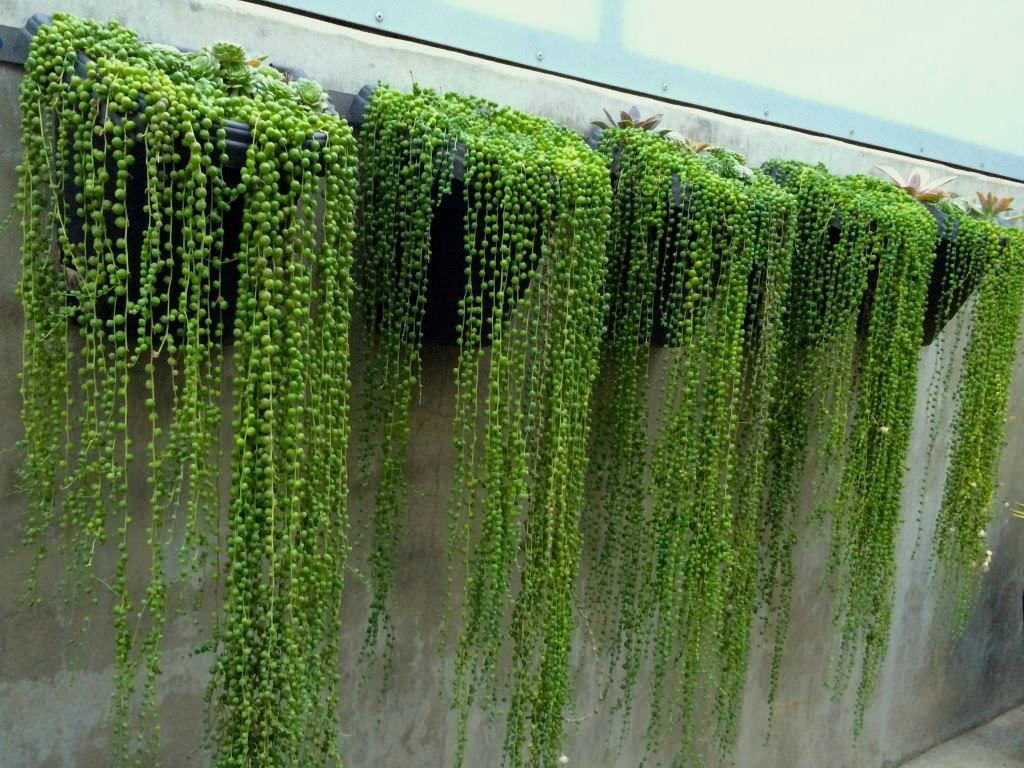
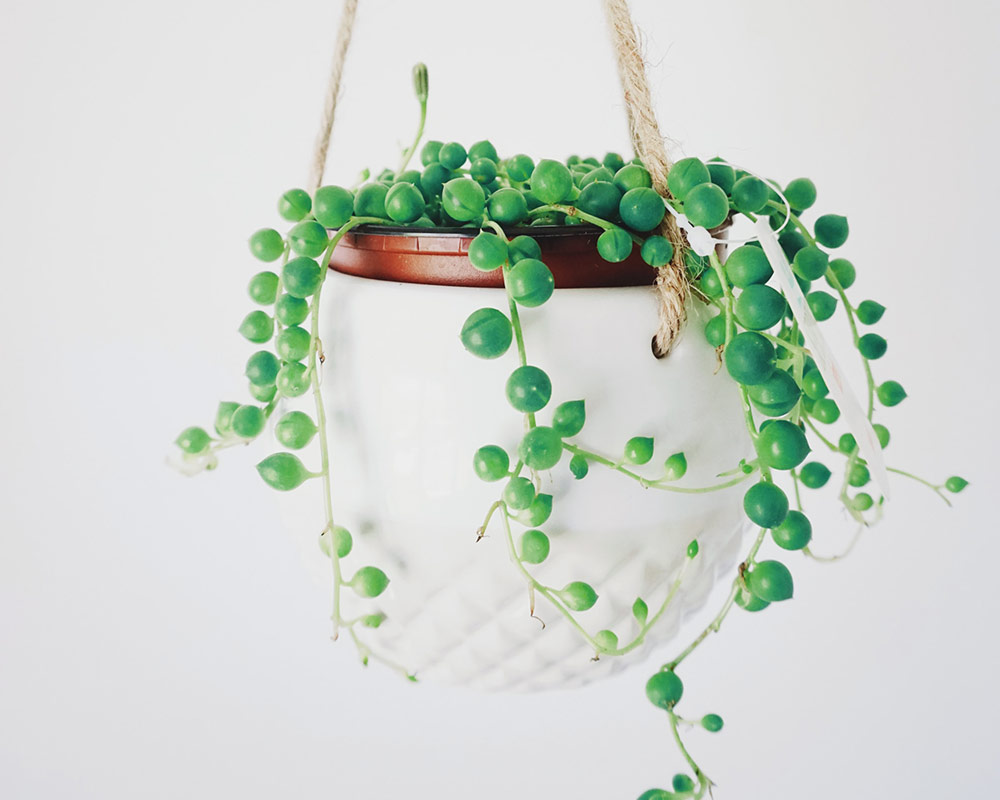
📍 Was sind die besten Kletterpflanzen für eine Pergola?
Elfen sind perfekte Kletterpflanzen, die schön auf einer Pergola wachsen und widerstandsfähig gegen schwierige Bedingungen sind. Andere Rankpflanzen, die Sie wählen können, sind Glyzinien und Kletterrosen. Im Gegensatz zum Efeu, der nur dekorative Blätter hat, wachsen bei ihnen auch schöne bunte Blüten.
📍 Was sind die besten Kletterpflanzen für den Balkon?
Gewöhnlicher Efeu ist die beliebteste Art von Kletterpflanzen, die auf Balkonen angebaut werden. Wenn Sie etwas anderes wollen, können Sie auch Altweiberbart oder Geißblatt wählen. Kletternde Hortensien sind eine weitere gute Idee.
Empfohlene Artikel




